As Yakub Memon’s hanging triggered a debate across India, various Kashmiris knowing Mumbai’s Tiger after 1993 refreshed their memories telling Bilal Handoo how Delhi pre-empted his terror plans
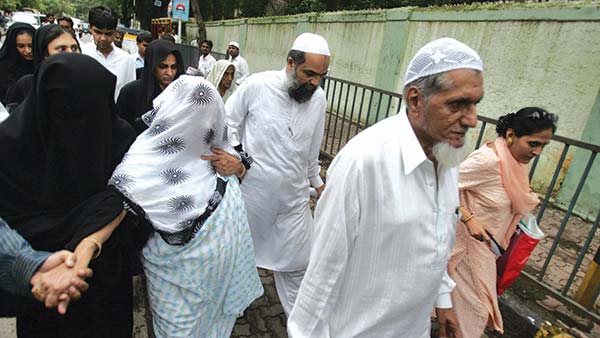
A summer before guns rattled, a couple from Bombay visited Kashmir for vacations. They met a Kashmiri family who mesmerised them with their hospitality. Before leaving, the couple promised to return valley next time in their big brother’s chopper. As militancy took over, no chopper landed, but memories remained.
Many years later, a hardcore militant from Srinagar’s Aloochibagh running roof-tin shop at Hari Singh High Street was having a secret meeting with a Mumbai man figuring in India’s ‘most wanted’ list. Karachi hosted this bonhomie between Kashmir’s Hilal Baig and Mumbai’s Tiger Memon. The objective was to devise a strategy that would redefine the combat tactics of Kashmiri militants against Delhi.
But before that could have happened, Hilal Baig had floated Jammu and Kashmir Students Liberation Front (JKSLF) at a time when Kashmir’s pumped up armed camp was fast splitting into small groups. “Big bosses in Pakistan backing the movement were at peace with this split,” said a former JKSLF commander, who renounced militancy long back for peaceful life. “Their idea was to float around 150 small groups to confuse India through multiple engagements. But the idea backfired as it created gulf and led to group clashes.” Out of this split, people saw likes of Mushtaq Zargar floating al Umar, Mushtaq ul Islam emerging with Hizbullah and others with their own armed groups.
Amid this divided house, Baig-led JKSLF (thought as JKLF’s sister group in Muzaffarabad) wasn’t on same page with Ashfaq Majeed-led pro-freedom militant outfit, JKLF. “The two groups weren’t as such hostile to each other,” continued the erstwhile commander. “They just believed in different mode of action.” Once actions made statements, people realised that Baig was no ordinary guerrilla making rounds in Kashmir with AK-47.
“He (Baig) had big plans,” said Baig’s former aide. “He was illiterate, but a born-militant gifted with military mindset.” To display his combat skills, Baig, a man of few words, created what many called Kashmir’s first “terror squad” he named “death squad”. It would barge into paramilitary bunkers, slit throats and run away.
Later it indulged in high-profile kidnappings. The abduction of the erstwhile vice chancellor of Kashmir University, Mushir-ul-Haq was carried by them. But perhaps what made Baig different from his contemporaries was his operation codenamed “Crush India”, the brainchild of Tiger Memon backed by big bosses in Pakistan, said Baig’s former aide.
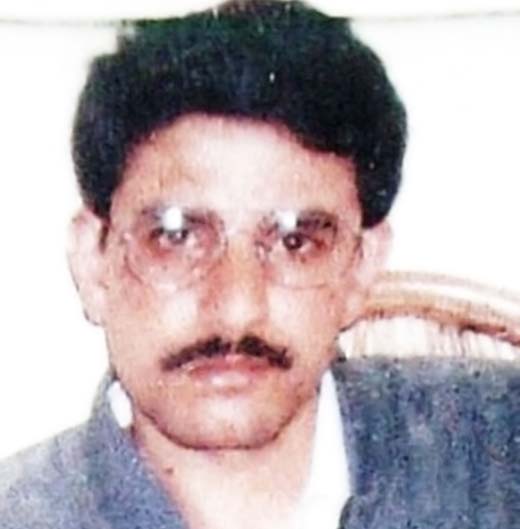
Some 20 years later, an Australian whistleblower Julian Assange became a global sensation for leaking classified diplomatic cables on WikiLeaks. One US cable (C-NA7-00565), revealed how in April 1991, Hilal Baig persuaded by Pakistan’s inter-services intelligence division (ISI) renamed JKSLF as Ikhwan-ul-Musalmeen (IUM). Baig’s new outfit had adopted a fierce militant method: to carry out attacks outside J&K. “The motive was to hurt the enemy in his own backyard,” Baig’s former comrade said. “And the message, was loud and clear, ‘Hit enemy’s raw nerve.’ ”
On March 12, 1993, 13 serial blasts shook Mumbai sending India into deep mourning. The attacks were most destructive in Indian history: 257 dead, 713 injured. Perpetrators were speedily identified. One among them was Ibrahim Abdul Razzak Memon aka Tiger Memon, the man who was shortly punched hard on his face by a Kashmiri boxer-turned-militant, Usman Majeed.
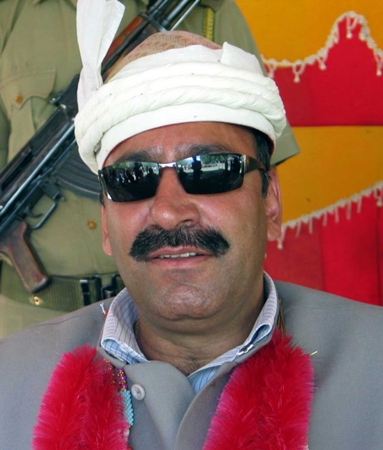
A Congressman’s son, Majeed graduated in Humanities before picking up arms for ‘liberation’. He was JKSLF’s Baramulla boss. His ‘good militant’ image saw his detention term melting away in 1992 spring in exchange for four civilians held hostage by his group.
But he was no longer the same man once he stepped out from 26 days detention. He had a change in his heart. Weary of militancy, he wanted to be a pacifist. “A lot of people within the organisation were beginning to feel the same way,” said Majeed, the incumbent Bandipora lawmaker. “Many of the cadre (JKSLF) used to complain that while they were getting killed, our leaders, Hilal Baig and Sajjad Kenu, were safely sitting in Pakistan.” Some intelligence brain armoured with “militant psycho profiles” was working behind the curtains to create this mindset in Baig’s Ikhwan. It was a dormant stage before a full-blown radical dissent fanned out in Kashmir.
With this “radical” mindset propping up, Majeed received Baig’s command: “Meet me in Dhaka. We are planning something very big.”
The message came a month after serial bombs rocked Mumbai. A disillusioned militant from Bandipora, Majeed, went ahead and met Baig in Bangladesh. The duo eventually left for Karachi after clearing some security hiccups. In Dhaka itself, Baig informed Majeed: “Look, I have come in contact with Tiger Memon. He needs us to train his men for a series of eight bombings to be carried out in coming Ramzan.” For Majeed, the news was ‘chilling’ because he was changing fast.
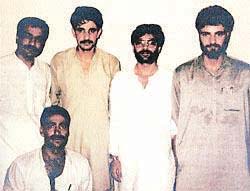
But in Pakistan, raining money hooked Majeed’s attention. Soon Ikhwan’s Muzaffarabad office came up, closer to Majeed’s residence equipped with gym. In that gym, Tiger met Majeed in fall 1993. After learning about his boxing skills, Tiger insisted on a short sparring bout. Majeed ended up punching hard on Tiger’s face. But the punch felt like ‘love bite’, as it brought the two sports enthusiasts closer.
Amid this Majeed-Memon “camaraderie”, Baig was a busy man, creating a network of his agents in Calcutta, Bihar, Andhra Pradesh, Kathmandu, and Dhaka. But certain arrests threw the plan haywire. Somehow, said Baig’s aide, Delhi felt Bombay-type blasts could take place elsewhere. As alarmed Delhi mobilised men and machinery, Baig’s “Crush India” was sent into packing for a while.
Things also turned sour for Tiger in Pakistan. After his younger brother, Yakub visited India with bagful of evidences, ISI blamed him. With the result, he was stripped of all support besides luxury. Tiger immediately disappeared from the scene until resurfacing in January 1995 when he met Baig, Majeed and others one last time for dinner. “By then, Tiger was back with a big plan,” said Majeed, carrying a ‘worst image in Kashmir among all pro-Indians’ as per US cable. “He was negotiating with Hilal and Sajjad, to set up the Jammu and Kashmir Islamic Front (JKIF).” This new outfit was the brainchild of larger political game plan. Its members having houses, guides in Nepal and Gujarat were tasked to operate in northern and western India, Majeed claimed.
Back home, India’s top spymaster (then India’s Henry Kissinger, now PM Modi’s National Security Advisor), Ajit Doval was setting a stage to launch Kashmir’s anti-hero. Doval was in talks with JKSLF militant, a former folklore singer from North Kashmir’s Hajin, Kuka Parray, for starting counter-insurgent militia in valley. Once Baig sniffed the scandal, he along with Sajjad returned home to set his house in order. But it was no cakewalk to restore his ‘radicalised’ cadre, taken well into confidence by Doval-Parray duo.
In that confidence net woven with fine intelligence threads, a disillusioned insurgent and an aspiring pacifist, Usman Majeed finally found salvation. He shortly rose to become ‘dreadful’ counter-insurgent.
But the moment Baig learned about Parray’s dangerous game plan, he visited Hajin to neutralise the “renegade ringleader”. “But somehow, Parray learned about Baig’s intentions and managed to give him a slip,” said Baig’s former comrade. “If only that day Baig would have his catch, then Ikhwan might have died from instant heartbreak at its very birth.”
As it couldn’t happen, Ikhwan bifurcated. Parray spearheaded Ikhwan-ul-Muslimoon and Baig retained the original title. For Baig, this radical shift of the group he created was intolerable. But on face of mounting militia at behest of counter-insurgency grid, he could only adopt, wait and watch approach.
By 1995, Baig’s close confidante, Sajjad Kenu (JKIF’s head) was detained. Kenu escaped in a jailbreak only to be slain by Special Operations Group (SOG) on January 8, 1996. The same SOG later killed Hilal along with his aide, Khursheed Ahmad in summer 1996 at his Dalgate hideout, where Baig was hiding with his teenage wife, lapping their month old daughter.
Before receiving her husband’s badly mutilated body incised with name “Hilal” on his back next morning, Zubaida, Baig’s wife, was interrogated by SOG men. “That night,” she recalled, “they (cops) kept asking about some Haider.” Zubaida had never heard this name in her fifteen month long marriage with Hilal. The question was: who was this Haider, whose search had accidently solved SOG’s hunt for its top catch, Hilal Baig, a master in disguise, whose face was seen only by his close aides.

Mystery over Haider persisted until two men tasked to do fact-finding exercise tracked down JKIF’s phone number (445699) in Pakistan’s capital on September 4, 1997. Upon dialling, one of them heard a voice, repeatedly asking: “Are you sure, this call isn’t being taped?”
“No, not at all! We just want to have a meeting to know your story.”
“If so, I will speak more clearly,” the man hung up phone before asking the duo to meet him at a specific address.
After dusting miles, the two fact-finders believed to gather information for Pentagon reached Islamabad’s westernmost suburbs where the group’s house was tucked into a narrow alley. They were ushered into the house by one Dr Haider. Apart from him, two men were waiting inside, one among them, Bilal Baig.
But the question remained, was this Dr Haider the same Haider hunted by Kashmir’s SOG? The mystery, perhaps, was about to get over. The moment introduction began, the two fact-finders learned that a medical doctor from Kashmir’s Baramulla, Dr Haider was JKIF’s deputy, who identified Bilal Baig as the outfit’s chairman. As it turned out, this Haider was indeed young widow, Zubaida’s mystery man, hiding in Pakistan.
Haider told the visiting duo how JKSLF gradually metamorphosed into JKIF over the years. “In April 1992,” he told them, “I was detained and tortured by Indian troops in Srinagar. They killed my elder brother, destroyed my home, forcing me to flee to Pakistan.”
Pointing to Bilal Baig, Haider told the visitors: “He too suffered.” Baig’s sister-in-law, father were killed by Indian troops. And his sister, Farida Behanji was imprisoned in New Delhi’s Tihar Jail for over a year because of her brother’s activities, Haider revealed.
On parting note, Haider informed the fact-finders: “JKIF wants Kashmir’s independence.” He even disclosed the group’s favourite method of attacking troops: “through suicide bombings”. Just like Hamas in Israel, he told the duo.
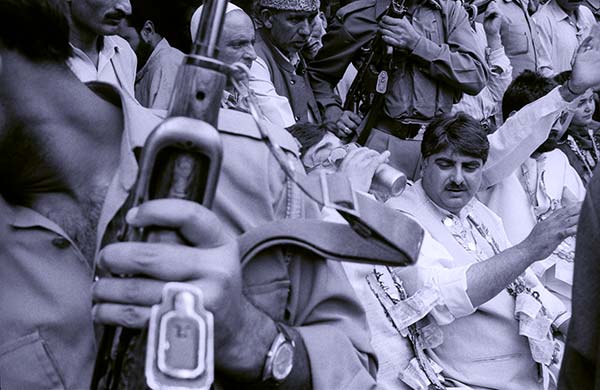
By 2011, WikiLeaks let the cat out of the bag. It made an expose that Uncle Sam (US) knew (by mid-90s itself) that Tiger Memon had tied up with ISI and helped create JKIF managed by Bilal Baig, running an “indoctrination” camp near Muzaffarabad. “One Colonel Farooq of Pakistan ISI tasked Bilal Beig and Tiger Memon to utilize Kathmandu-based activists Lateef and Javed Krawah to set off blasts in Delhi,” the cable signed by then US Ambassador to India, Frank Wisner, revealed.
On May 21, 1996, JKIF team set off a very high intensity explosion at Lajpat Nagar killing 13 persons, the cable said. “The RDX used in this blast was brought from Kathmandu.” But what possibly could have been the biggest strike done by JKIF on Indian soil was a planned chain of explosions in Delhi before Republic day 1997 on Tiger Memon’s command.
For that, one Faiyaz Ahmed Shah aka Farooq was tasked by Bilal Baig and Javed Krawah in Pakistan. “He was given 20kg of RDX and money in Kathmandu,” the WikiLeaks expose revealed. “Before he could execute the plan, Farooq, along with Ghulam Rasool Mir aka Goga, Aijaz Ahmed Choudhary, Nazir Ahmed, and Manzoor Ahmed Danposh aka Jan, were arrested in Kathmandu on December 11, 1996.” Many thought the group arrest was the last nail in the outfit’s coffin.
Later, one Mushtaq Wani, a militant-turned-separatist, revealed JKIF was formed after Ikhwan-ul-Muslimeen group split apart in 1995. “Most of the members were uneducated from Kashmir,” he said. With top brains done to death, JKIF like Tiger Memon couldn’t keep tick on bangs they loved to create.
But in Kashmir the family never waited for the chopper. Serial 1993 blasts helped them understand the man whose family flew in choppers. Last week, they got a body bag too.















